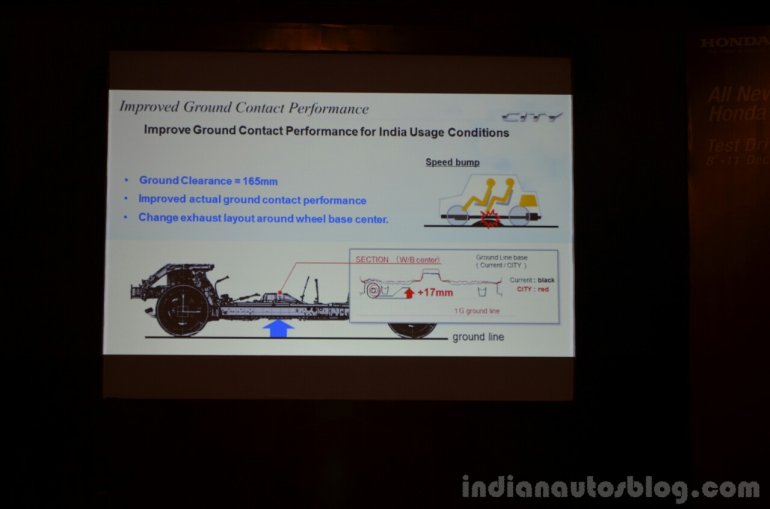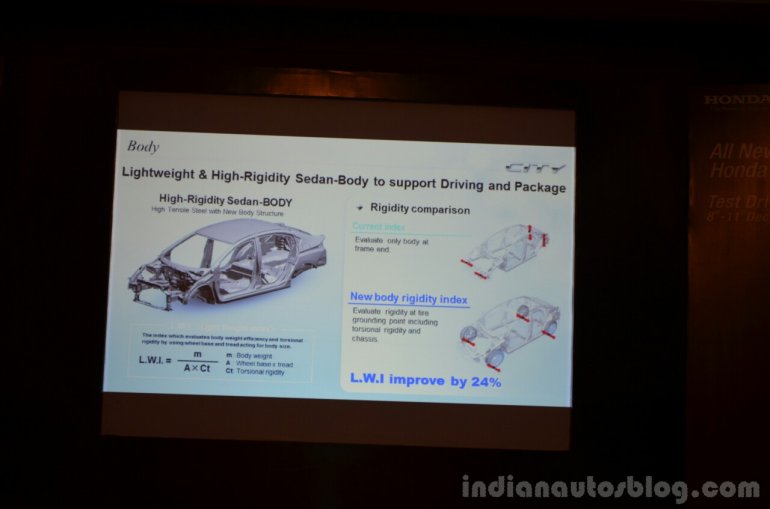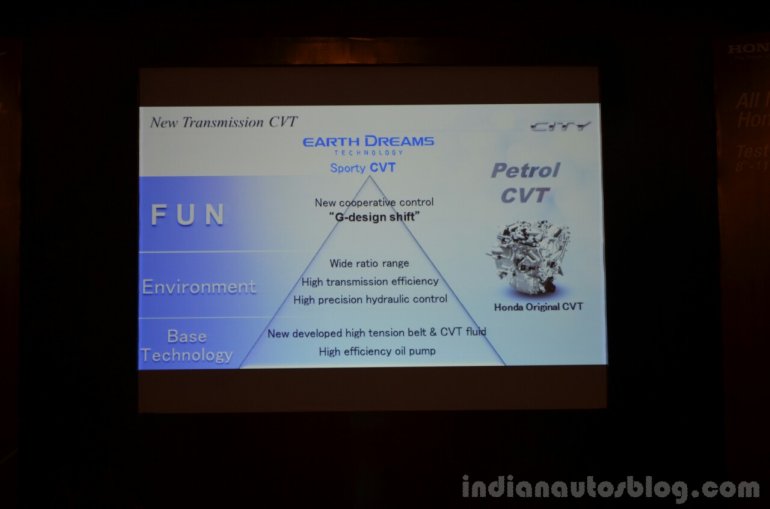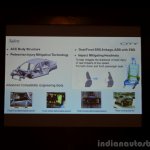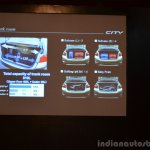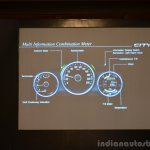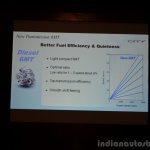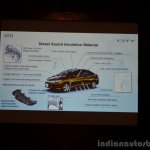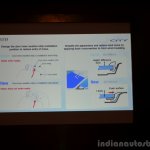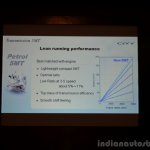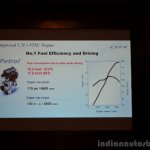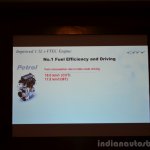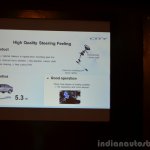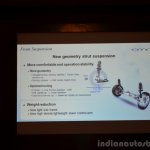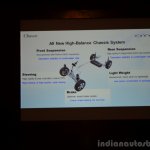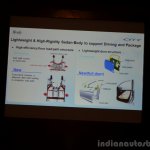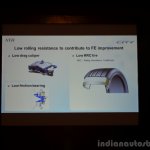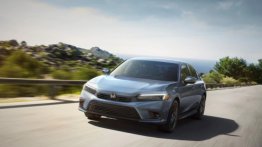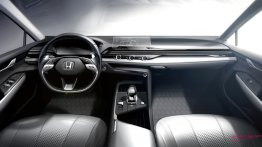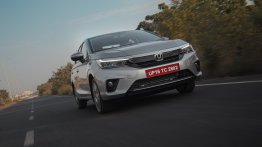Honda’s Japanese R&D team responsible for the development of the new City gave us a detailed presentation of the mechanicals of the new car. Before we talk about the individual variants, here’s the general outline of the new City.
2014 Honda City Dimensions:
The image above shows you how much the City has grown over its predecessor. While the wheelbase has gone up by 50 mm, the height has increased by 10 mm, and other exterior dimensions remain the same. Inside, the shoulder room has increased by 40 mm, and the headroom at the front by 10 mm. What’s pretty amazing is that Honda engineers have managed to juice out an extra 60 mm in rear legroom and 60 mm in the tandem distance between the seat bases.
2014 Honda City Ground Clearance:
The new City boasts an improved ground clearance of 165 mm as compared to the outgoing model’s 160 mm. That’s not all though. Honda’s R&D team point out that that the ‘ground contact’ has also been improved as is the placement of the exhaust system. As a result, the new City is unlikely to scrape its underbelly over most surfaces. Having driven the car through tarmac-less portions of Jaipur, I can vouch for this.
2014 Honda City Construction:
Honda is keen to point out that the new City uses a high-rigidity, yet lightweight body made up of high tensile steel. Though this information maybe completely useless to the rear seat driven CEO, or while driving this car at 20 km/h through Mumbai traffic, fact is that the new City is a pretty lightweight car. The top-end VX petrol AT weighs 1,085 kg while the top-end diesel weighs 1,165 kg.
Improvements have also been made to the suspension and steering of the car. At the front, the new City gets new geometry MacPherson struts, while the rear gets a high rigidity H-shaped twist beam.
2014 Honda City Safety:
At least the top-end variant of the new City will feature dual front airbags, ABS and EBD (Honda will not disclose the variant-wise specs for now). Apart from that, all variants of the car get the ACE (Advanced Compatible Engineering) body shell, which has also been optimized for pedestrian safety. The front head restraints of the new City are designed to reduce the likelihood of neck injury.
2014 Honda City Efficiency:
All variants of the new City get low rolling resistance tires to improve economy.
2014 Honda City Diesel Engine:
The City diesel is powered by the same 1.5-liter EarthDreams diesel engine as the Amaze. And like the Amaze, the engine in the City diesel produces 100 PS at 3,600 rpm and 200 Nm of torque at 1,750 rpm, and this is handled by a 6-speed manual transmission. The end result is that the City diesel is India’s most fuel efficient car at 26 km/l.
According to Honda, the City diesel has the best compromise between efficiency and in-gear acceleration from 40-100 km/h in fourth gear.
Engineers have also tried to improve the NVH of the car as the image above shows. When compared to their benchmark vehicle in this segment, Honda says that the new City is much quieter in sudden acceleration and cruising, be it on a flat road or rough road.
2014 Honda City Petrol Engine:
The new City petrol uses the same 1.5-liter i-VTEC engine as the older model. However, engineers have enhanced this further and it now delivers 1 PS and 1 Nm more than the outgoing model (at 119 PS and 145 Nm).
The engine features an exhaust gas recirculation system, optimized valve timing using double needle plug, reduced friction compared to the previous model and an integrated lightweight plastic manifold.
The ratios of the 5-speed manual transmission have been revised. As a result, the new City petrol MT delivers an ARAI claimed 17.8 km/l.
The automatic variant now gets a CVT gearbox, ditching the conventional torque converter unit. Based on Honda’s existing CVT technology, engineers have improved it further using a high tension belt, better CVT fluid and an efficient oil pump. Thanks to the new CVT fluid, Honda say that the City CVT has an 8 percent wider ratio than conventional CVTs. Add to that, the gearbox is lighter by 10 percent compared to the existing CVT model (not available in India currently).
What this all means is that the City CVT is more efficient than the City manual, returning 18 km/l. The paddle shifters, a tech highlight in the previous City AT, are still present in the City CVT and give the driver access to seven stepped ratios.
Other specs:
- Tyre size: 175/65 R15
- Fuel Tank capacity: 40 liters
- Boot capacity: 510 liters
- Turning radius: 5.3 m
- Front Brakes: Discs
- Rear Brakes: Drums

